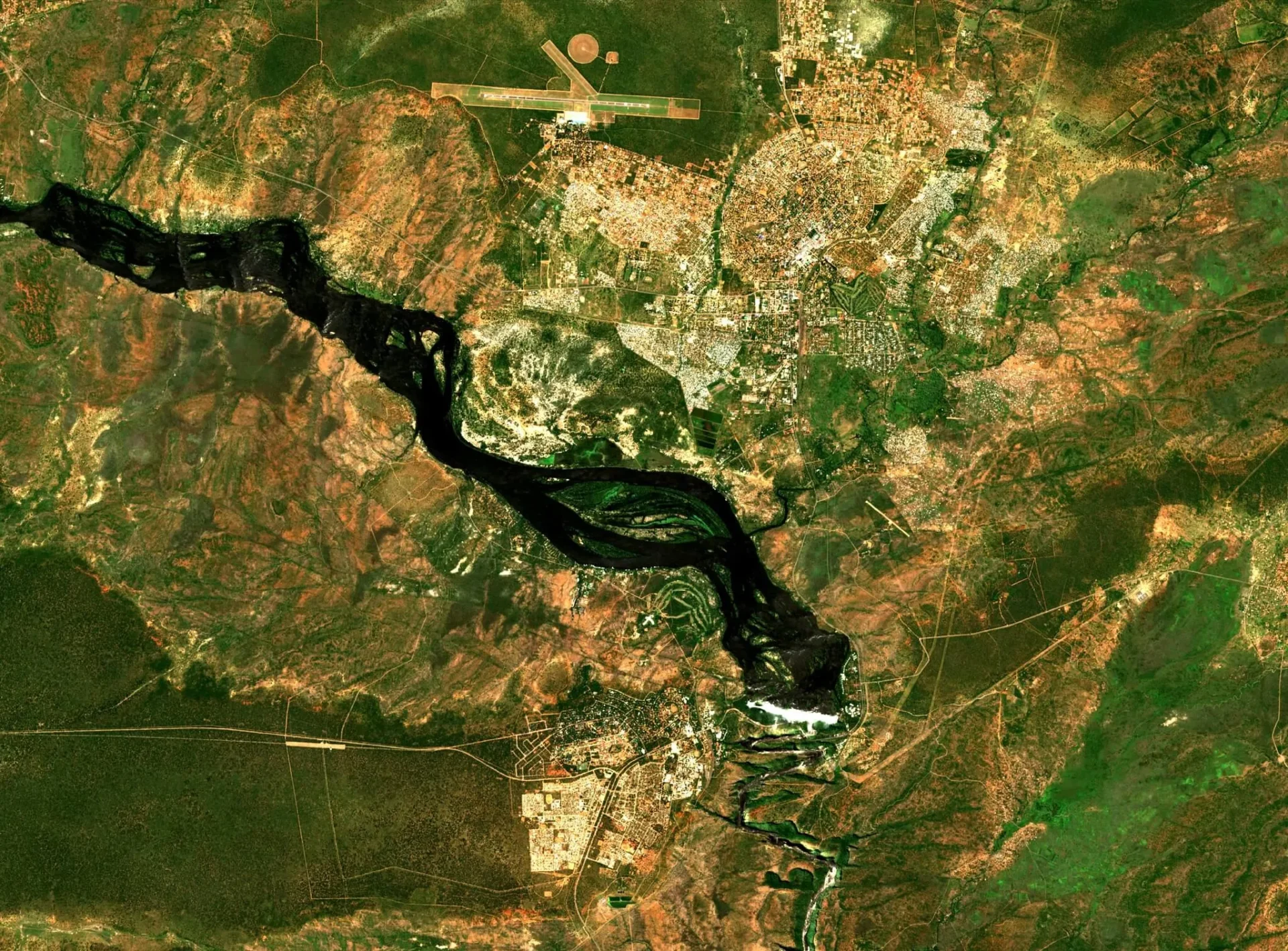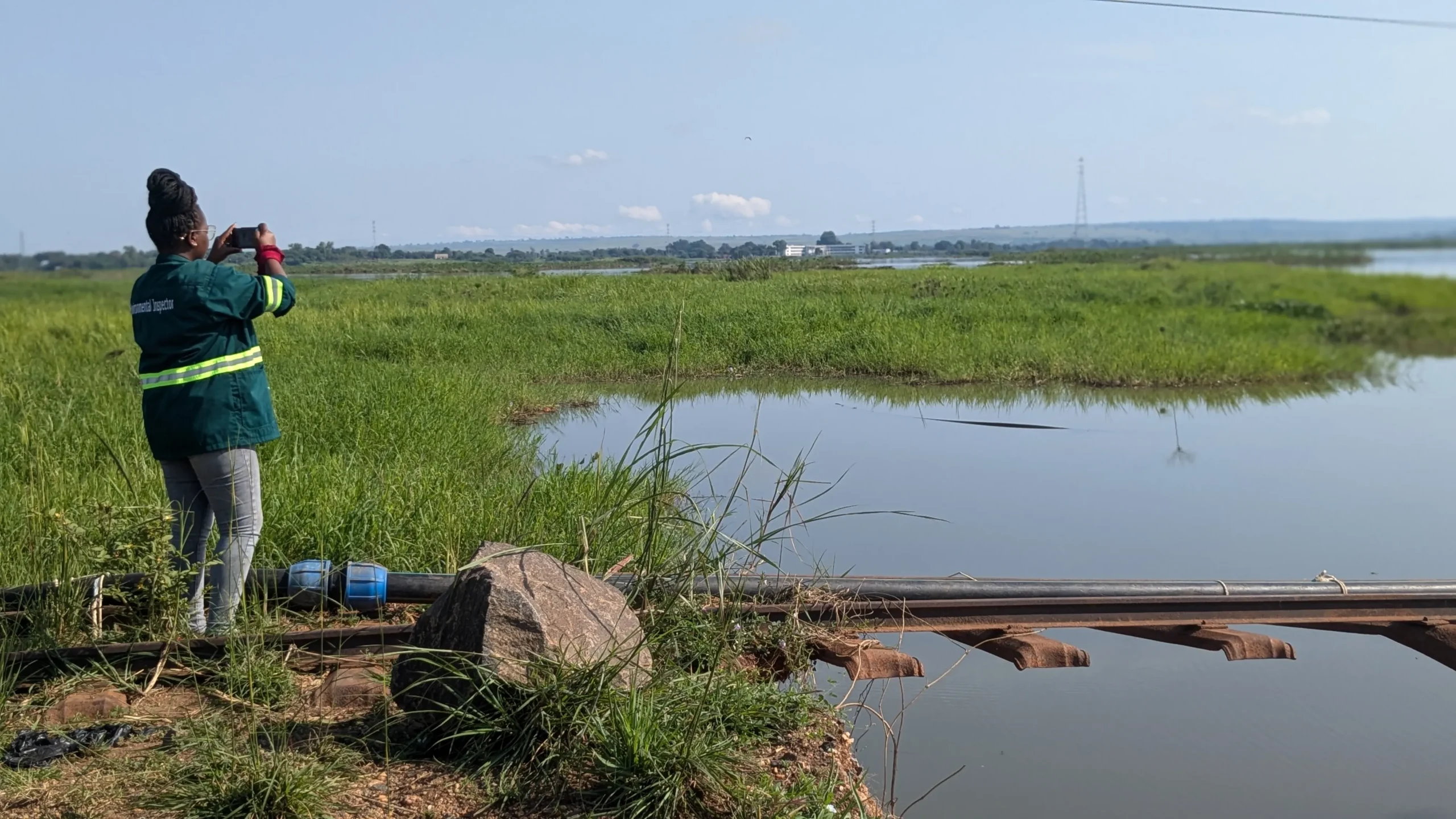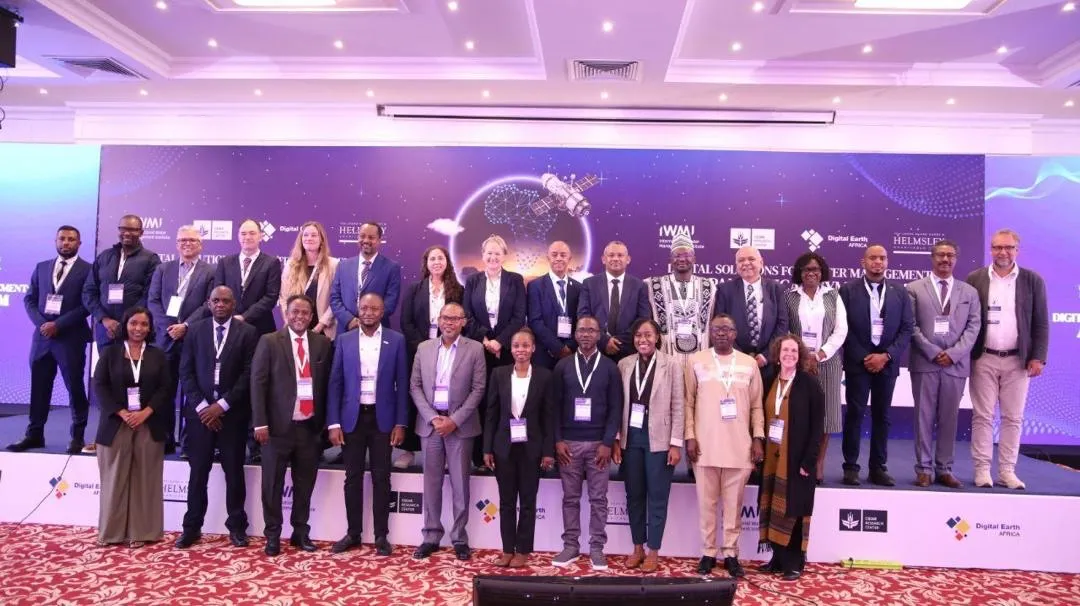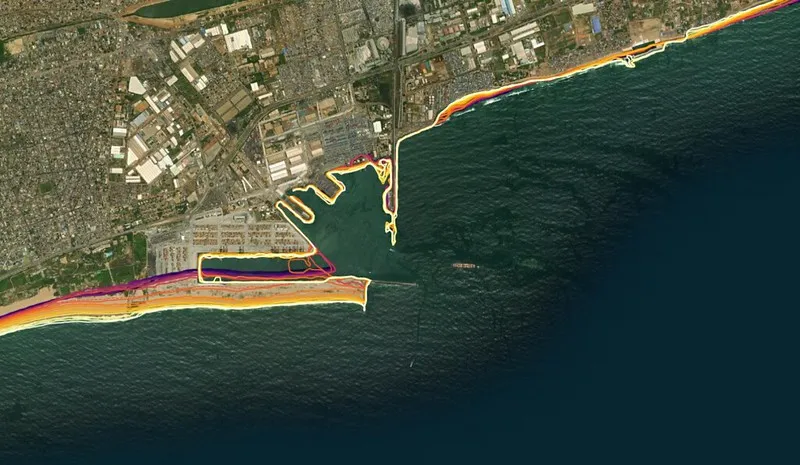Digital Earth Africa
Coastlines Service & Dashboard

Protecting coastal communities and infrastructure
The Digital Earth Africa Coastlines Monitoring Service combines satellite data with tidal modelling to map the shoreline location and the average sea level tide each year. By providing information on annual shoreline positions and rate of change along the entire African coastline, this unique Service enables trends of coastal erosion and growth to be examined annually at both local and continental scales and identify hot spots of coastlines at risk of significant change.
Key Features
Explore powerful tools and comprehensive data to monitor, analyse, and understand changes along Africa’s coastline over the past 24 years.
Comprehensive Coverage
Annual shorelines and rates of change statistics are provided along the entire African coastline at a 30m spatial resolution. Satellite data from 2000 to near real-time helps users pinpoint past and present coastline locations, monitor the rate of change, and detect at-risk areas.
Accurate Modelling
Integrates satellite data with tidal modelling to map representative shoreline locations and average sea levels annually, and with measures of uncertainty provided.
Continental & Local Insights
Analyse coastal retreat and growth at both local and continental scales to drive effective coastal management. Track and analyse the impact of natural and human-induced changes, such as extreme weather events and human development.
Applications
- Monitor and map coastal erosion across Africa.
- Assess the impact of local and regional coastal management based on historical data.
- Identify communities and infrastructure at risk from coastal erosion
- Model coastal responses to sea-level rise, extreme weather, and human development.
- Support studies on the causes and effects of coastline changes over time.
- Identify adaptation actions and inform national plans.
A StoryMap of Saly Portudal, Senegal
In support of Senegal’s National Adaptation Plan, Digital Earth Africa and partners including the The Centre de Suivi Écologique (CSE) in Senegal are using Earth observation data and DE Africa’s Coastlines Service to better understand coastal impacts from weather, changing climate, and expanding human population.

Overview of rate of coastal change in Saly Portudal including the Saly Portudal breakwaters.
Related Use Cases

November 20, 2025
Mapping East Africa’s wetlands with local expertise to safeguard them for the future

October 30, 2025
Pan-African symposium explores digital solutions for water management in Addis Ababa

 English
English  Português
Português  Français
Français  العربية
العربية 